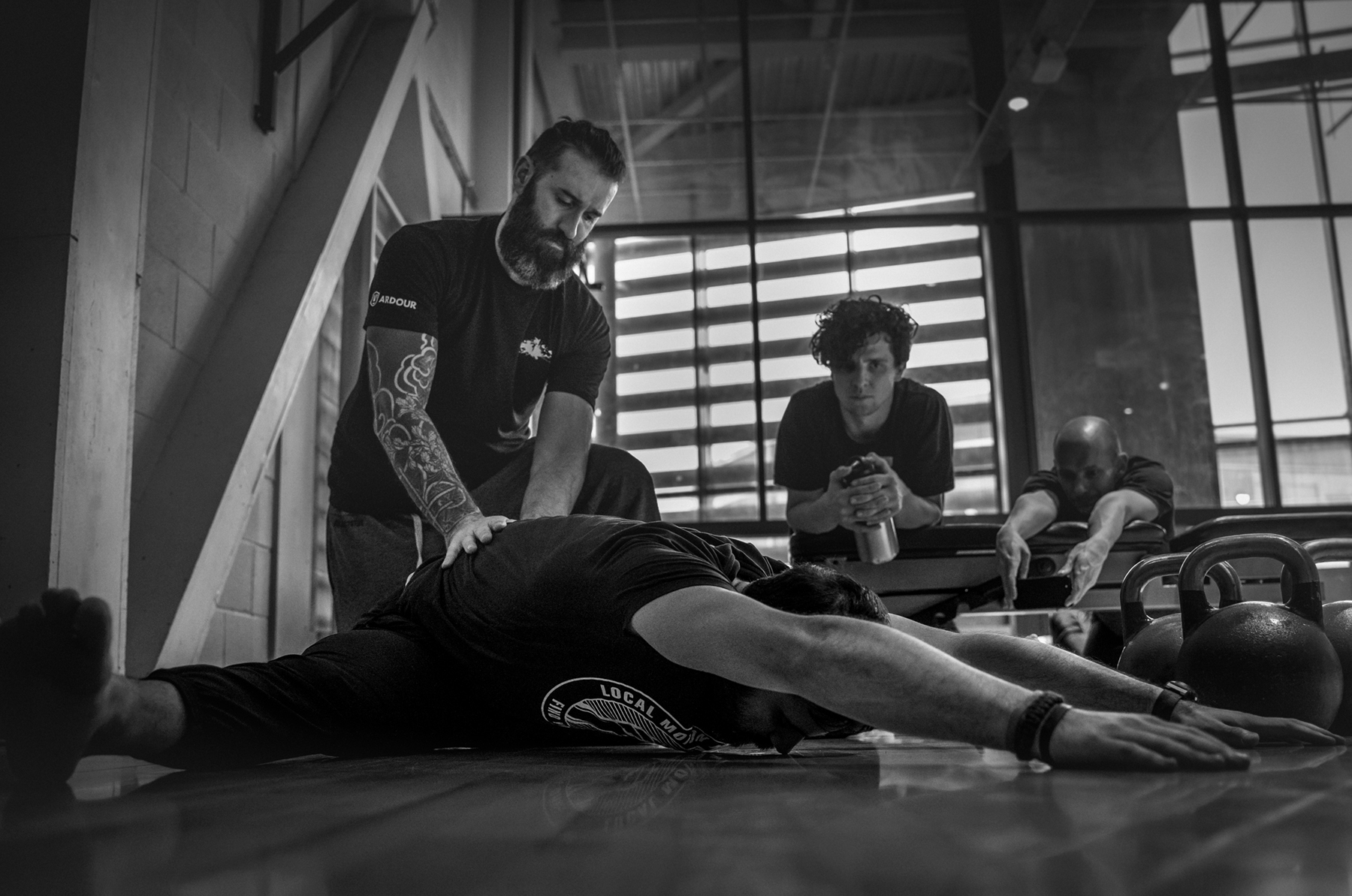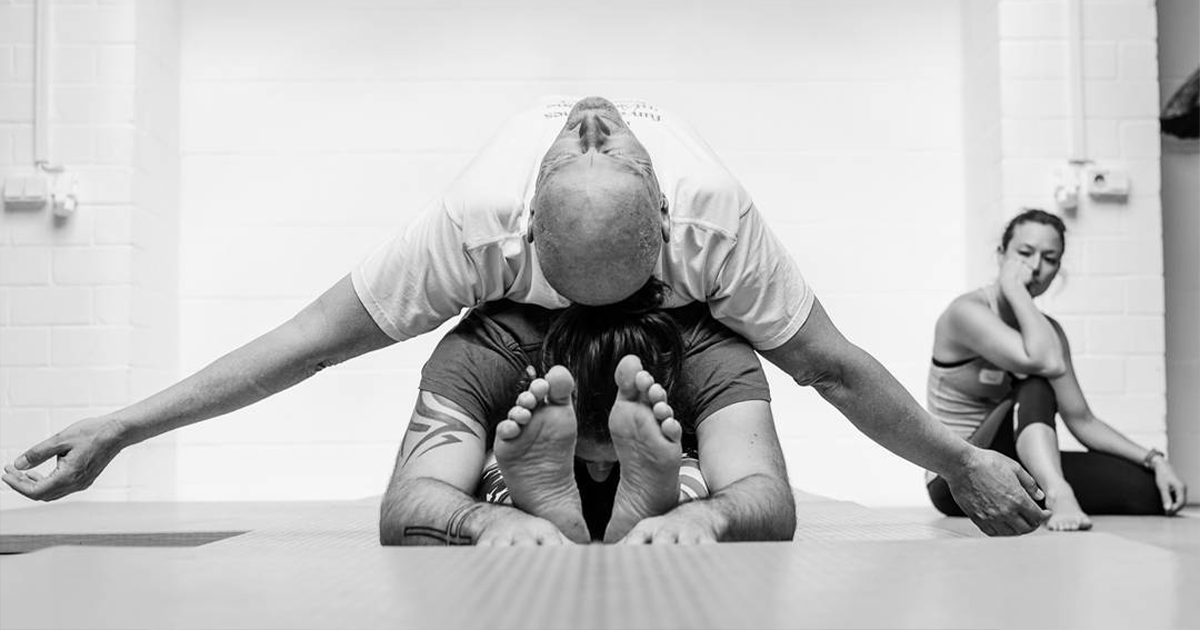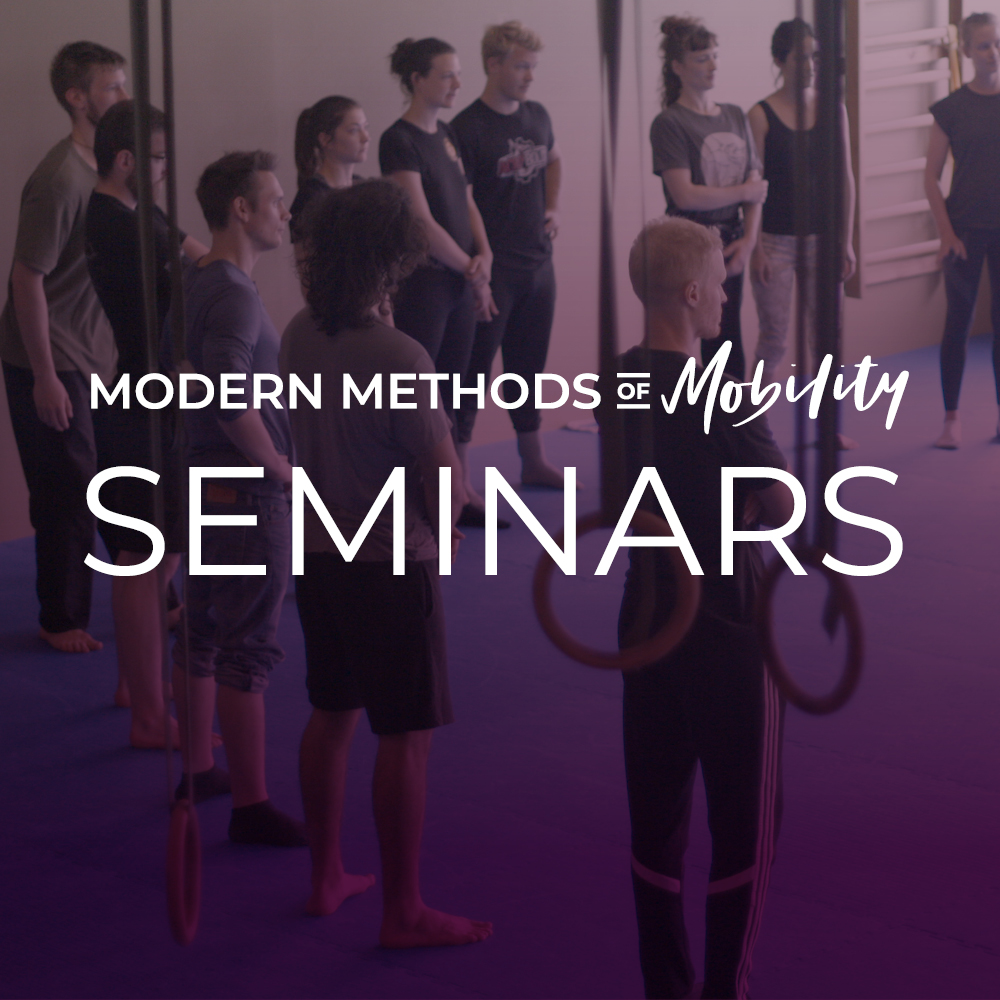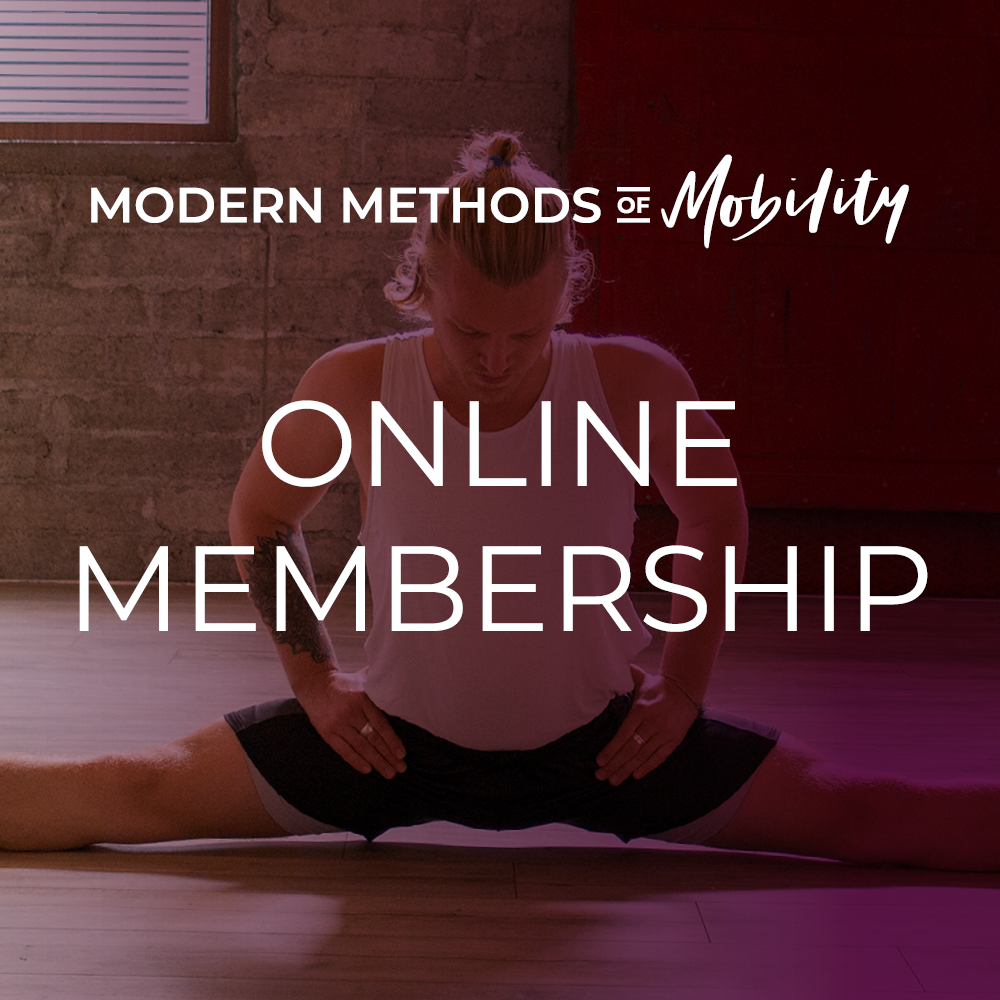Partner stretching is one of the most effective ways to develop or increase range of motion. Selective use of skilled partners will exponentially speed up your development. As you get more advanced it will almost be mandatory to maximise your potential. As we can not separate the actor from the environment, adding partner work to your stretching environment will shift the environment to one more conducive to flexibility development.
In the course of the development of the M3 system I had what I would count as two spiritual grandparents of the system. One being the go to text of Stretching Scientifically by Thomas Kurz and the Stretch Therapy system devised by Kit laughlin.
There’s an interesting quote in Stretching Scientifically:
“The use of partners in stretching. The practice of using partners in stretching is a waste of time, and it is dangerous. The helper is neither stretching nor resting. The danger of using a partner in stretching is obvious. The partner does not feel what you feel. He or she can easily stretch you a bit more than you would like. If you feel pain and let your partner know about it. by the time the partner reacts, it can be too late.“
I found it quite interesting that Thomas Kurz would be so against partner stretching when the evidence of partner based activities is so pronounced across all the disciplines that use partner interactions in stretching. It seems to me that he was limiting it to one of a myriad of potential uses of a partner to facilitate range of motion development.
Whereas if we look at the Stretch Therapy system, the system almost exclusively uses partner work of varying degrees. To have such a juxtaposition between the two sides of debate was interesting to me and led me to seek how both these methods of stretching can be combined synergistically.
If we are to look at the disciplines requiring the highest degrees of flexibility with the more systematic approaches to flexibility there is a huge amount of partner interaction in these systems. Due to the age differences in these disciplines the partner interactions are generally in a coach and student hierarchical power structure which comes with its benefits and drawbacks to be discussed in a later article. But despite the titles it is still partner stretching or partner facilitated range of motion development.
I think when most people think of partner stretching they think of someone pushing a person into a position. While this is certainly one level of partner facilitated range of motion training it is only a small fraction of the potentials. If we go back to the idea of nothing in isolation then every partner interaction can be a tool to develop range of motion, ranging from tactile feedback to the person who is working on developing the body map to effectively do an exercise correctly, to audio feedback, and providing an agile target for the system of tasking we use in M3.
Enter the intelligent dumbbell
With a partner applying resistance for a stretching position we have a large amount of potential that does not exist with a fixed resistance source such as a weight plate or our own body weight. The level of resistance and degree of stretch can be adjusted on the fly by a dialogue with the partner. We can increase and decrease to suit our personal tolerance of the position as it deepens.

The benefits of this adjustability is immense due to it potentially taking a stronger loading to get us into a position, and to then perform an isometric contraction against the partners weight. Once we have finished the contraction then the force required to maintain the position is significantly less in most cases and the partner can reduce the loading so the stretchee can spend more time in the position, digesting the new sensation and positioning.
The partner can also apply the force in a more beneficial and tailored direction than just straight downwards like a fixed resistance. The partner applied resistance can be a combined vector that is applying a directionality to the stretch. A simple example could be in a seated pancake the partner can press straight down and also forwards to help drive the hip rolling over action of the stretch. They can apply an uneven force side to side of the spine so as to correct an asymmetry in the position.
Being an intelligent dumbbell requires skill, it is something that needs to be taught in person to a large degree. Learning to feel and move someone’s body will teach you a huge amount about your own body as well. And receiving a partner stretch from skilled hands can get you safely into deeper positions than you would be able to achieve yourself.
The levels of touch
When using a partner to apply resistance to a stretch I think there’s three levels of contact with a person and a hidden fourth level.
Skin
At the skin level we sink into the surface of the skin and make contact with the tissue underneath. From here the goal is to apply a glide and a vector for the person to complete the stretch or task themselves. The goal is also to bring awareness to places that might not be moving in the right direction. At my own level the tension in the hands and fingers is so light that the listening ability is still there and with practice you can feel the lines of resistance inside someone’s body and guide them in the right direction.
Muscle
At the muscle level the pressure has increased and we get into the idea of contract relax stretching with varying durations of contractions. The pressure becomes something for the person to work against and with. The idea of guiding and listening is still present. This is the home of variable resistance, and altering this based on how much the person wants or does not want.
Bone
At the bone level the pressure has increased to a degree that you are now moving the body for the person and they are a participant and not the main driver. This is the home of the scary gymnastics coach. While it has its uses it should not be the first destination and can be very effective in the right hands but a risk when haphazardly applied.
The 4th Level – Peripersonal Space
Being the stretching partner, the hidden first touch occurs when you enter into that person’s peripersonal space. Here you will see interesting reactions depending on the person, their comfort towards you and their projections of how the stretch might be felt. Here you will see two main reactions; the person will sink and deepen the stretch or the person will tense up and brace against the initial contact. This reaction to the projection of how the touch might be will give you vital information on how well the person will digest the stretch and what sort of pressure they will need.
The partner as a guide
When aiming to increase our range of motion beyond what we have normally available we are entering a zone where our interpretation of the sense data from the positions or movements can be deceptive and not aligned with what is actually happening.
Here the partner can help us correct alignments and mis-alignments. The range of interactions here are rich, ranging from auditory cueing to tactile cueing.
In auditory cueing we are explaining to the person what they are doing or reinforcing the correct points of the stretch. It can be common for the stretchee to focus on one or two points of a position but neglect the others, so here the partner can bring back the focus.
Tactile cueing is one of the biggest advantages in partner facilitated stretching. Here, by simple touch, we can directly bring focus to body parts that might need to be adjusted. This level of coaching interaction is one of the main keys of getting the stretchee into their body and getting the awareness to the dark parts of the body. A simple example would be in back bending, if the person is not accessing their spine, a simple touch at the level not bending to the same degree as the rest of that spine segment can direct the person’s sensory awareness to this blindspot and then give tangible awareness to the area to move.

The rules / commandments of partner stretching
My own experience of partner stretching has been an interesting journey. Partner stretching methods featured heavily in circus training, generally coming from gymnastics methods. With these methods they definitely helped but they basically relied on no finesse and just aiming to increase the stretch in a maximal depth manner. I suffered quite a severe, and absolutely avoidable, injury to the adductors when one coach decided to dump her full weight onto me without warning while in a supported middle split. This injury was 100% avoidable if she had followed my commandments of partner stretching laid out below.
- Both people must know what is expected of them in the interaction. Both in terms of set up of the position and what is the correct movement to be undertaken.
- The person being stretched is in direct control of the pressure and resistance. This means there should not be a movement from the stretcher that is not directed by the stretchee.
- The person applying the loads should not increase loading too quickly and allow digestion time for the person being stretched.
- The person stretching should aim to use the levels of touch in order if you can get the person deeper than normal using only the skin level contact then there is no need to push stronger.
- The role of resistance applier is a skilled one and should be studied and constantly refined through practice.
- Communication both verbal and physical is key. Understanding the level of touch someone is comfortable with as well as letting the stretchee guide the level of intensity of the exchange is key. We have to remember as we are all coming into this type of practice with our own histories, and people will have a varying amount of comfort with being touched on various body parts. Respect that.
Despite this injury I obtained many years ago, I believe that partner stretching, when applied properly, is probably the most effective method of gaining range of motion.
In a program of complete flexibility development partner and solo work play varying roles of importance. In the M3 system we would use partner stretching as a means of taking the person into the new zones that are completely off the body map to give the person a controlled experience for greater ranges of motion and how to digest the experience in a controlled manner. Then, when we use our solo work, the positions are not novel and are more available when doing an exercise involving the position. Our other main use of partner work in the system is to guide technical excellence in the exercises we are performing. Remember that flexibility is a skill like anything else and has to be practiced with the idea of developing excellence in what we do.



